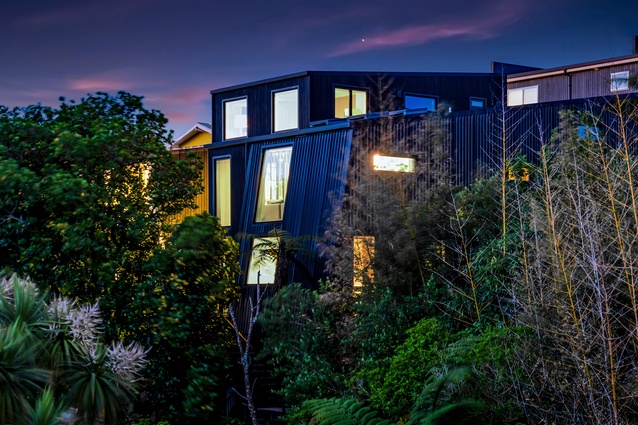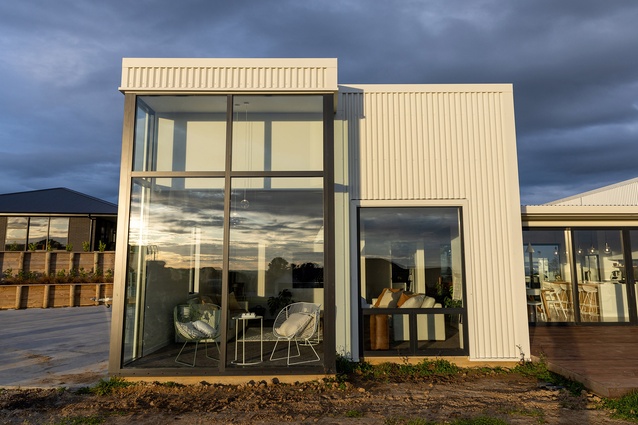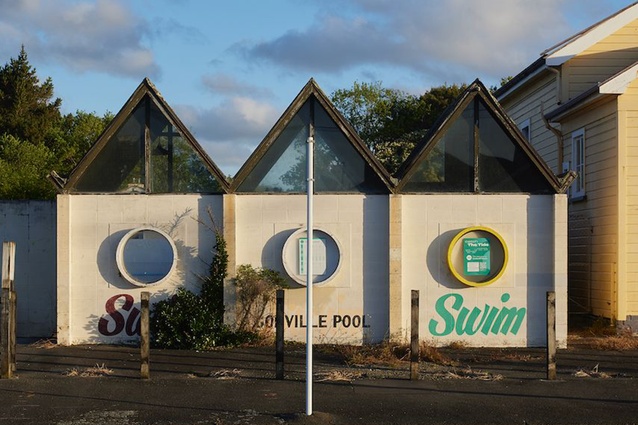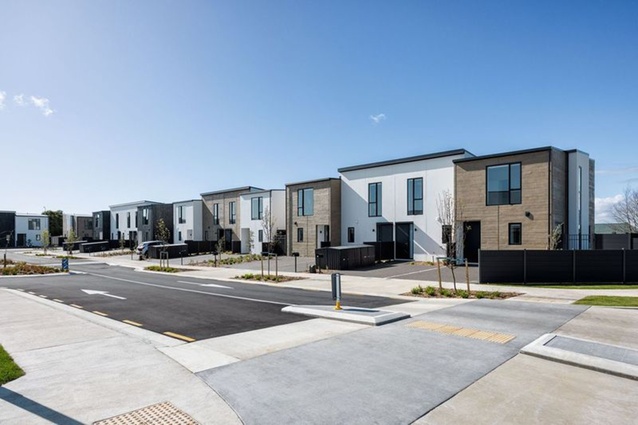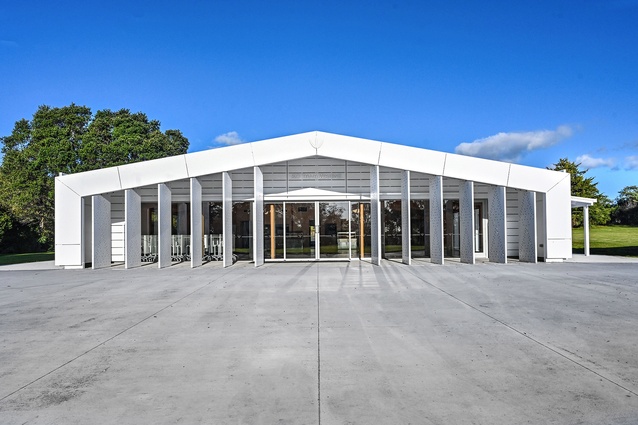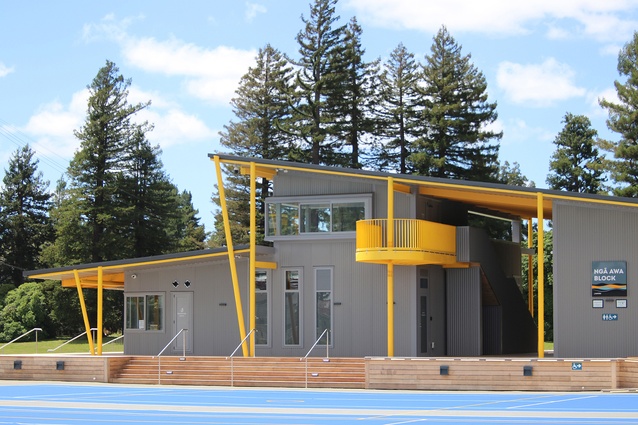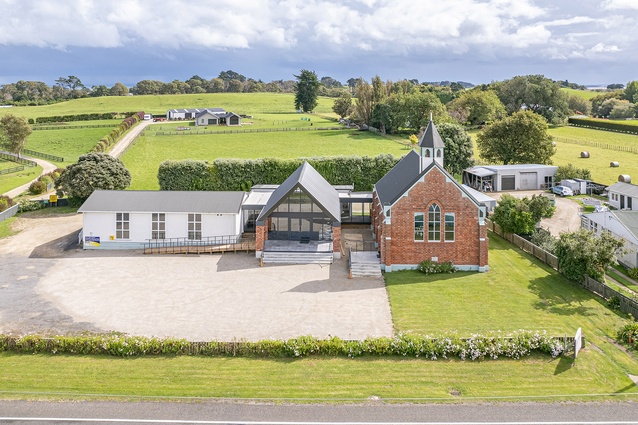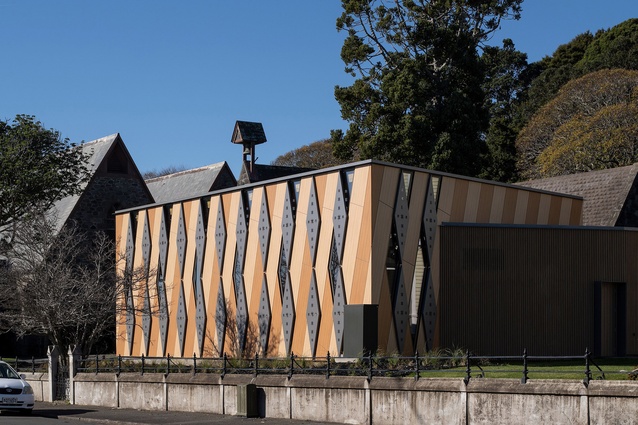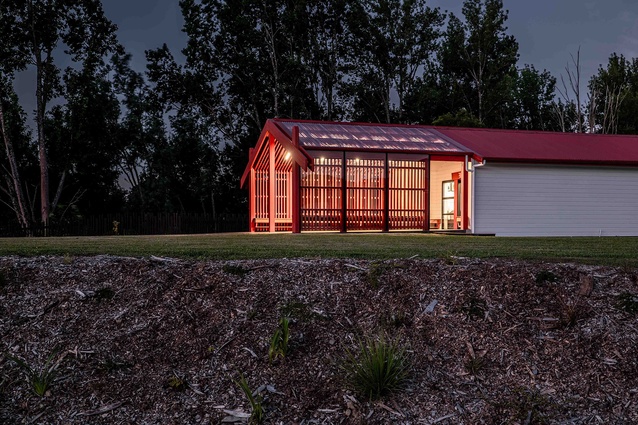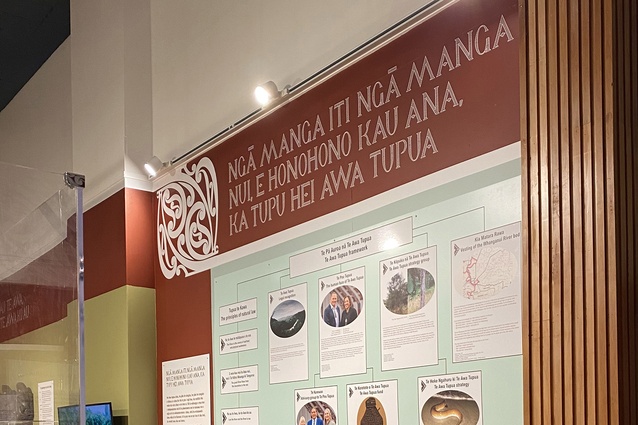Winners revealed: Western Architecture Awards 2024
Ten projects received Te Kāhui Whaihanga New Zealand Institute of Architects Awards for the Western region on 24 May at an event at the Refectory, Massey University in Palmerston North.
A handful of public projects are included in the winners. They include Ko Tamawāhine, Ngā Awa Block, Westmere Presbyterian Memorial Church and Te Whare Hononga. Most are examples of bicultural collaboration between architects and iwi that have resulted in buildings designed for communities.
“Many projects were faced with restrictive budgets, but the outcomes are excellent, with culturally enriching architecture that inspires community spirit and in some cases, provides a lifeline to communities,” says jury convenor, Monika Puri of 242am Architects.
The new addition to Whanganui’s Westmere Presbyterian Memorial Church by Dalman Architects is a great example of the collective effort required for these projects: members of the congregation felled trees to provide timber and gathered old bricks to repurpose for use in the new structure.
In Levin, Mabel Central housing by Wright & Gray Architects won in the Housing — Multi Unit category. The private development of 43 terraced houses is at once simple and groundbreaking.
“The architect was inspired by ideas from other districts’ plans to introduce multi-unit housing in Levin,” says Puri. “They controlled the entire chain of construction in the building phase so that the supply chain was local. In this way, and in other winning projects, the role of the architect went further than the traditional role. They’ve challenged and expanded it.”
Three dwellings won in the Housing category, including Gonville Pool House, a transformation of a public pool complex into a family home. The adaptive reuse of the disused community pool in Whanganui has reimagined the building as a modern open-plan home, and the pools as sunken gardens.
A jury of three judges Nick Strachan of Athfield Architects, Heather Hocken of WSP and lay juror Tyson Schmidt, assessed this year’s Western projects with Puri.
The winning projects are:
Housing
Baring Terrace House by Boon
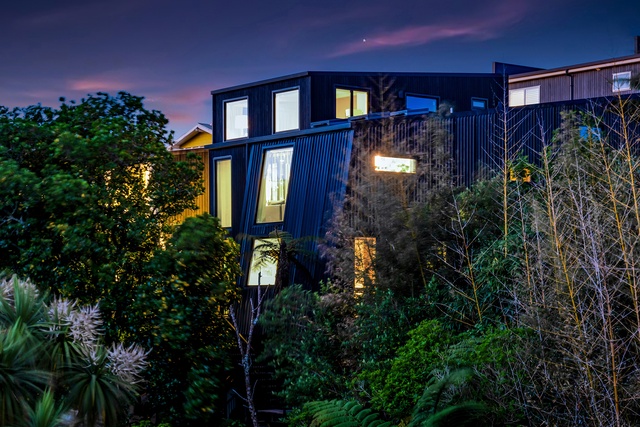
This sophisticated family home maximises a difficult inner-city hillside site adjacent to Te Henui Awa. The three-level home is expertly planned to address the northwest light, views to the awa and clever connections between interior and exterior living spaces. The sleek exterior forms are well modulated at each level to reduce the scale of the development, achieve privacy between spaces and connect with the awa (river) edge.
Resene Colour Award
This well-crafted exterior contrasts with the rich colour and texture of the interior, which is a joy to experience at each level as you travel through the spaces.
Cracroft House by Dalgleish Architects
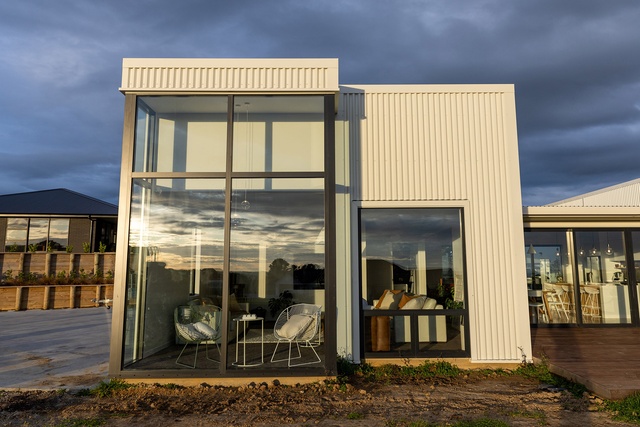
A deep understanding and respect for the site and clients’ needs has resulted in a well-planned functional home that provides flexibility and joy for the owners, their family and friends. Two robust industrial pavilion forms — public and private — bookend the central hub that can be opened to address Te Awa Tupua or guard against the westerly wind. The well-crafted transition in the public form between the entry, living and flexible ‘garage’ achieves neo- plastic spatial characteristics that meet the demands of family life. The well-detailed lighthouse window draws northern light inside, cleverly celebrates the clients’ faith and offers a point of difference in the suburban development.
Gonville Pool House by Patchwork Architecture
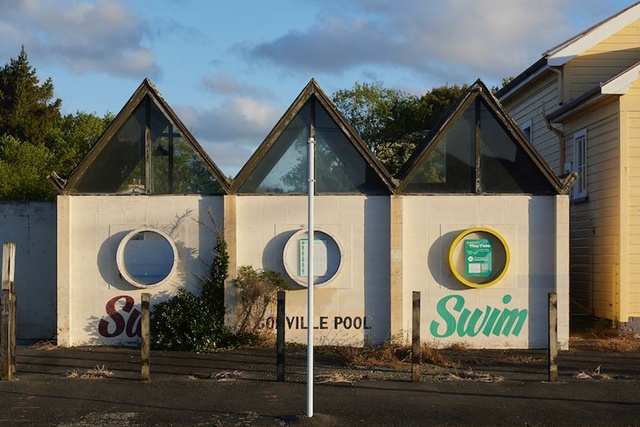
An experimental site for a new family home. While modest in scale, this well-crafted home exudes a warmth of colour and internal materials and an elegance of geometric structural detailing. Wrapped and protected within an enclosed courtyard, the original pool gate house and entry conceal the suburban oasis of green within. Working hard to the site’s edges, this family home retains remnants of its aquatic past, which bring a smile to one’s face. This is a celebration of the vision of both client and architect, and how recreational spaces abandoned by some can be skillfully adapted and re-imagined by others.
Housing – Multi Unit
Mabel Central housing, Levin by Wright & Gray Architects
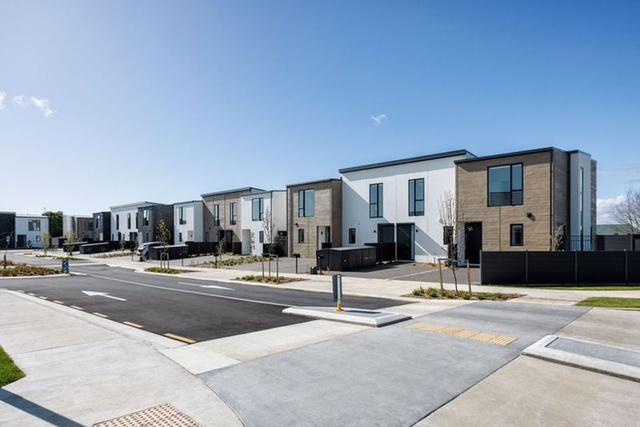
A successful medium-density development that creates livable, affordable housing. This relatively new typology for Horowhenua shows that it’s possible to increase density without compromising quality when meeting escalating housing demands. The developer and contractor leveraged their expertise in concrete-panel construction and applied materials and subtle shifts in form to create interest.
Public Architecture
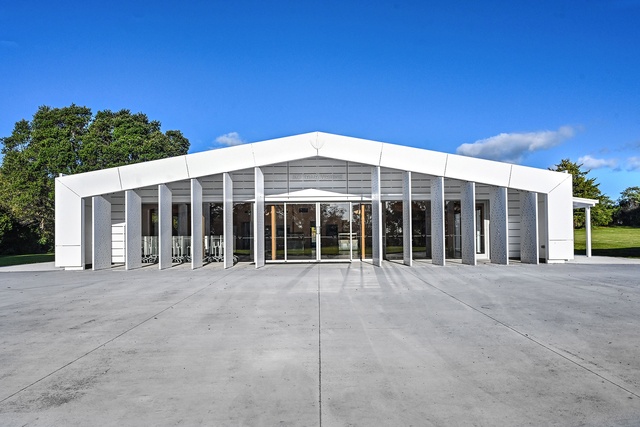
Ko Tamawāhine by Boon
The design sets a new standard for modern wharekai, meeting the weight of history and lofty aspirations of the future, fulfilling its own role with style and without dominating the surrounding whare. Smartly incorporating materials and features from the original wharekai, the new rotating fins and façade lighting add an element of wow factor for approaching manuhiri. Inside, timber portals and plywood wall-and-ceiling linings provide a sense of warmth. Ringawera and kaimahi are not forgotten — a highly resolved layout ensures functionality and the south façade treatment respects their mahi. A truly considerate design process means Ko Tamawāhine can host for generations to come, helping continue Te Whiti’s instruction — E tū tama wahine i te wā o te kore.
Ngā Awa Block by Copeland Associates Architects
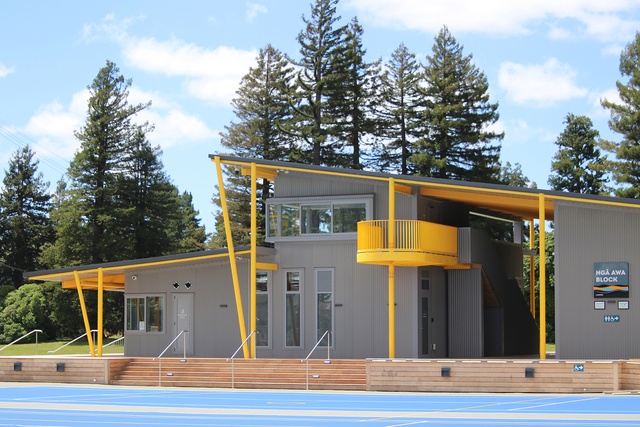
Elegantly poised on multiple edges of paddock, field and tennis courts, this carefully composed building provides shelter and varied vantage points to the adjacent sporting activities.
A generous verandah wraps the building edge, providing shelter, circulation and fleeting interaction between teams, whatever the outcome of the match. Robust exterior detailing sits comfortably with the joyous riot of structural colour of colonnade posts and beams. The kids can throw a ball around without limit. A considered understanding of the building’s performance and energy use, as well as robust interior finishes and the best referees viewing platform in the land, contribute to a building that can make this community proud.
Resene Colour Award
The punch of colour is carried through from exterior to interior, referencing the surrounding local flora and history, helping to ground and confirm the building as a community asset.
Westmere Presbyterian Memorial Church: New Entry Building by Dalman Architects
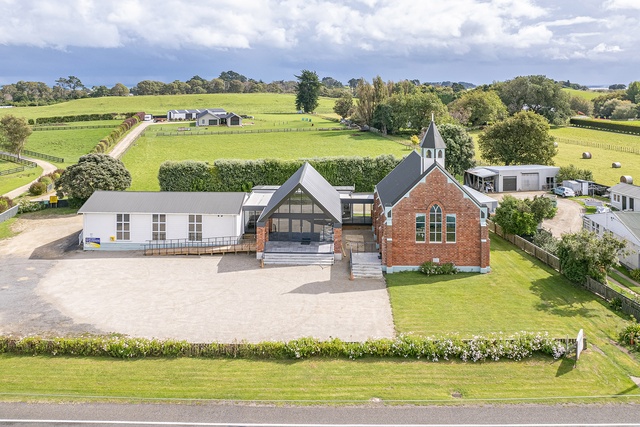
Non sibi sed aliis — not for self but for others. This project speaks directly of the community that drove it and the Presbyterian faith it fosters. The project achieves its brief without pomp and ceremony. It also veils the complexities that needed to be overcome — how to find thousands of outdated dimensioned bricks (you crowdsource, of course), or to save on the timber needed (you get your congregation to fell and mill their trees), or resolve how the church works for the addition (you just flip the interior layout around). This has not been a quick process — shifting and lifting of support buildings was done years ahead, helping ensure the new addition is connective and doesn’t dominate the church. Every step has been planned with the future outcome in mind.
Te Whare Hononga by Tennent Brown Architects
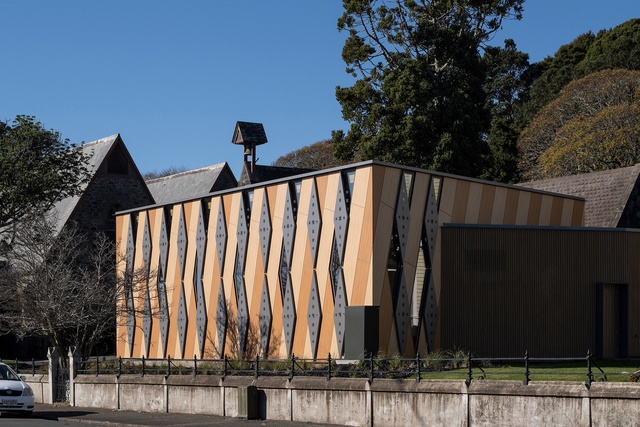
Bravely advancing the architectural dialogue of reconciliation and cultural connection, this is a first step in recognising and healing a difficult past. The exterior is a contrast to the colonial-era church, referencing weaving patterns and directly addressing motorists on their daily commute along the main road. Inside, the structure is the hero, speaking directly to a tenuous and tentative grasp that it manages to hold. Stylistically and technically successful, the true success of this project’s intention will only be known with years of hui, wānanga and kōrero. But for now, perhaps it succeeds simply by starting the dialogue.
Small Project Architecture
Te Upoko o Te Whenua Marae Canopy by Boon
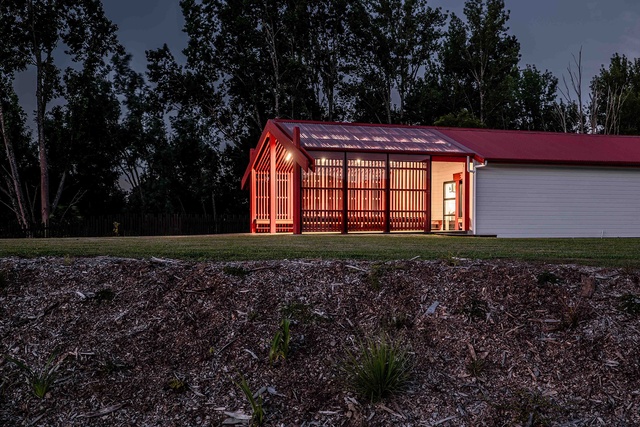
An example of small-project architecture with a big impact. Ngāti Maru’s only marae heightened the need to achieve a lot with a little. The first steps of a larger marae development, this addition reaches out and stands proudly to greet the many manuhiri and tangata whenua that journey to Tarata. A gentle intervention with a touch of innovation that respectfully replicates the central placement of the original pou, deepening the mahau without darkening the kūwaha, and ensuring those that rest beneath its shelter are still able to connect with the surrounding landscape.
He Awa Ora by Dalgleish Architects
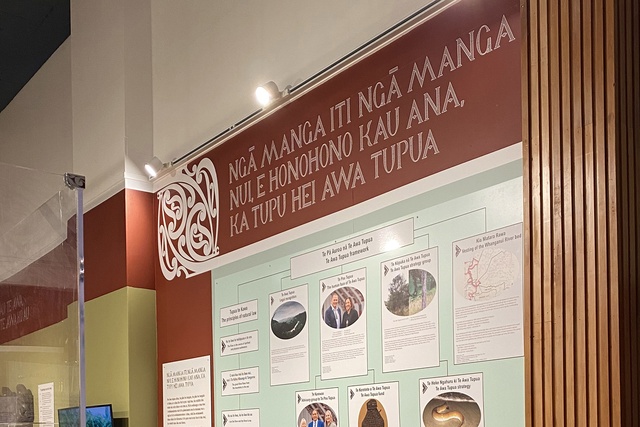
Designed to travel, this work will continually evolve and change, just like the awa it represents. And what a rich story it has to tell and with so many taonga to display. To respect what needed to be achieved within a very tight space and budget, every decision made was an important one.
The constrained exhibition space has been transformed to successfully tell the story of Te Awa Tupua, the Whanganui River, and its people. The design starts with dynamic graphic exterior signage and seamlessly continues through to the flooring treatments in the museum atea and a pathway under the tomokanga. The location of taonga within the space has been carefully considered and curated in consultation with hapū and iwi. Clever use of colour helps the viewer navigate their way through the exhibition, from the mountain to the sea.
The NZIA Architecture Awards programme is supported by Resene and APL.

